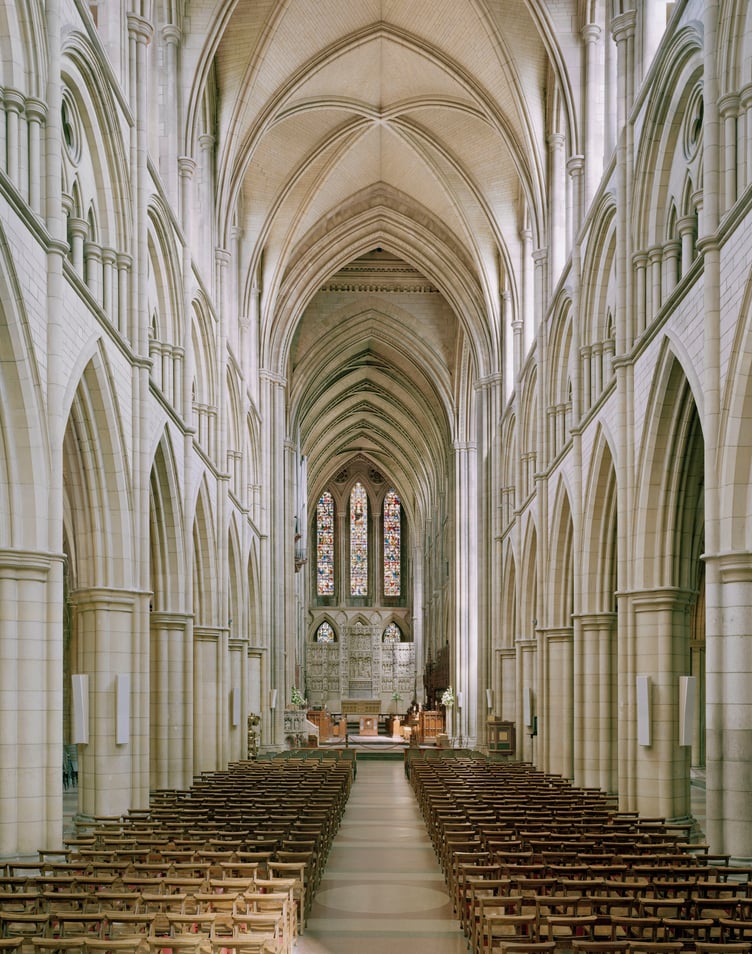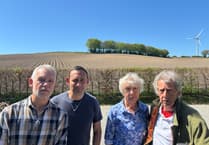THE city’s cathedral will host The English Cathedral, an ambitious tour of works by the late Magnum photographer Peter Marlow, from March 4 to April 3.
On show in Truro Cathedral’s St Mary’s Aisle during normal opening hours, this free photographic exhibition chronicles the naves of England’s 42 Anglican cathedrals and is touring them all — Truro Cathedral is 25th on the list.
Sean O’Neill, chief operating officer of Truro Cathedral, said: “We’ve never had 41 other naves under our roof before, so it’s a great opportunity for visitors to see how the Anglican cathedrals differ without having to leave Cornwall.”
Marlow (1952 - 2016) was commissioned by Royal Mail in 2008 — the 300th anniversary of the completion of St Paul’s Cathedral - to photograph six Anglican cathedrals for a set of commemorative stamps. Captivated by the magnificent interiors, he set out to shoot all 42, guided over the next three years by a copy of English Cathedrals (1989) by Edwin Smith and Olive Cook and, more prosaically, a pack of Anglican Cathedrals of England Top Trumps cards.
“What I thought was going to be incredibly simple became intricate, complicated, and utterly absorbing,” he said. “The journey was memorable and wonderfully hypnotic, a kind of reflective pilgrimage. My cathedral days involved hours of driving and thinking, with my reference Polaroids drying in the sun on the dashboard.”
With its soaring three spires, Truro Cathedral was built between 1880 and 1910 and is considered a triumph of Gothic Revival Architecture. It was the first Anglican cathedral to be built on a new site since Salisbury Cathedral in 1220, and occupies the original site of the parish church of St Mary the Virgin — of which it retained the South Aisle, now known as St Mary’s Aisle.
While the chairs may have changed since Marlow photographed it, Truro Cathedral remains as it would have been over 100 years ago, with its dramatic high vaulted ceiling and gothic arches. In the distance can be seen the revered stained glass, and ornate decorative sculpture by British artist Nathaniel Hitch, including the exceptional reredos and the ornamental screen behind the altar.
The images appear deceptively simple but involved much experimentation. Shooting on large format film using only natural light, Marlow set up in the same position at nearly all of the cathedrals: looking east towards the nave and altar as the dawn light streamed through the main window, thus capturing the cathedrals emerging from the darkness as if suspended in time and removed from the modern age.
Marlow used Fujifilm FP 100 Instant film to test the view and the exposure of each shot. In recognition, Fujifilm has supplied instax cameras and film for visitors to take instant photographs of the exhibition in-situ. These will create an ever-changing display to be shared as part of the exhibition and on social media channels as a contemporary public response to the works. A winner from each hosting cathedral will be awarded an Estate Stamped Fine Print of a photograph of their choice.





Comments
This article has no comments yet. Be the first to leave a comment.